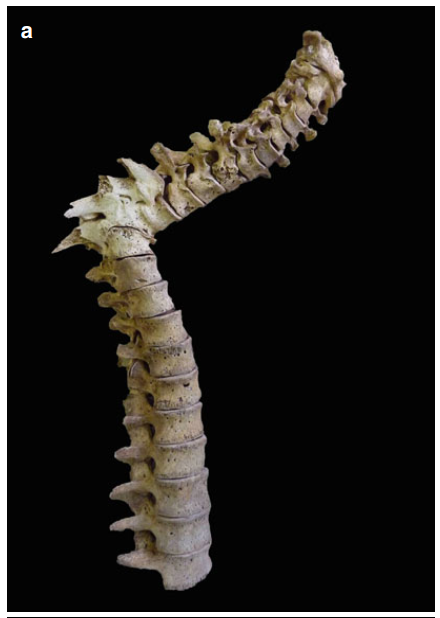Tuberculosis in the Ancient World
Episode 11 - May 23, 2020

Merle and Lee speak with Julia Simons, a PhD student at the University of Pennsylvania, about her research on tuberculosis in ancient Greece and Rome. They discuss how ancient writers talk about the disease, the material culture evidence for it, and the increasing use of bioarchaeological remains in studying it. Julia offers insights into why diseases like tuberculosis have not featured as prominently in large questions of historical changes, even though it may have killed significant numbers of people in the past and continues to kill many around the world today. Merle and Lee conclude by reflecting on disease hierarchies and how we teach diseases in courses focusing on what is included and what is left out.
Image: Piccioli, A. et al. (2015) Bones: Orthopaedic Pathologies in Roman Imperial Age. The Italian Society of Orthopaedics and Traumatology (Springer International Publishing: pp 34-5)
Further Reading
- Dubos, René and Jean Dubos The White Plague: Tuberculosis, Man and Society. New Brunswick, NJ 1987
- Grmek, Mirko ‘Tuberculosis: The Great Killer’ in Diseases in The Ancient Greek World. Baltimore, 1983
- Roberts, Charlotte A. and Buiksra, Jane. E. The Bioarchaeology of Tuberculosis: A Global View on a Reemerging Disease. Gainesville, FL, 2003
- The Francis Crick Institute ’70,000 Years of TB Infection and Evolution’ 4 September 2013
Our Guest
Julia Simons,
PhD Student, University of Pennsylvania
